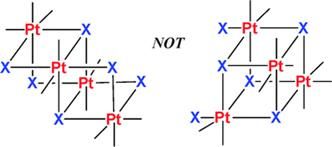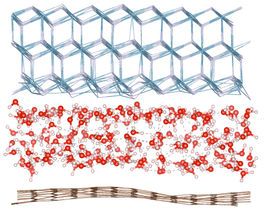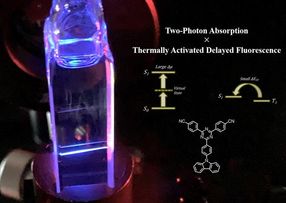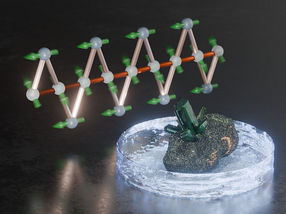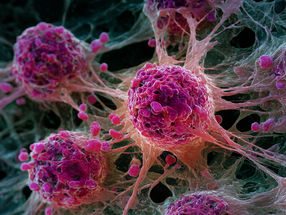Micromotors use surface variations for docking and guiding
Researchers at the Max Planck Institute for Intelligent Systems, the Institute for Bioengineering of Catalonia (IBEC) and the University of Stuttgart have revealed in an article in Nature Communications that micromotors can be guided using tiny topographical patterns on the surfaces over which they swim.
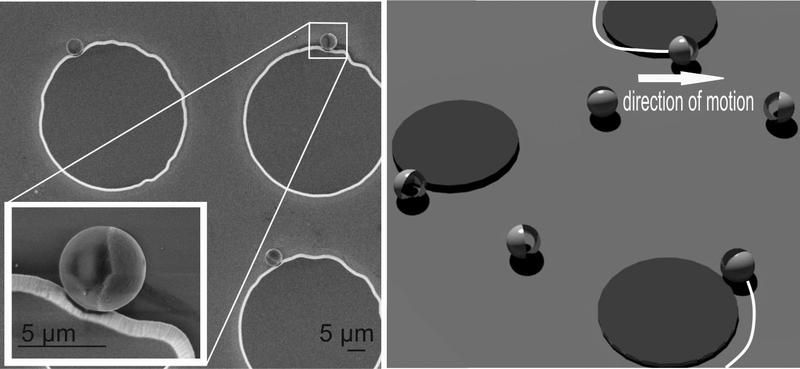
Self-propelled Janus particles dock around micro-fabricated circular patterns.
MPI for Intelligent Systems, Stuttgart
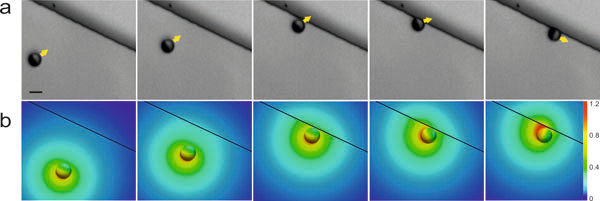
An active particle approaches a micro-fabricated step and orients along it due to chemical activity and hydrodynamic interactions.
MPI for Intelligent Systems, Stuttgart


Samuel Sánchez and Mykola Tasinkevych's ‘microswimmers’ are usually guided through fluids using specially engineered magnetic multilayer coatings, which combined with external magnetic fields, helps to control their trajectory. This new study, the result of a collaboration between experimental research and theory, demonstrates that the particles can use the features of the surfaces over which they swim to change their direction of motion.
“Micromotors tend to settle and move near surfaces, and we’ve seen that this tends to interfere with their swimming behaviour,” says group leader and ICREA research professor Samuel, who heads the Smart Nano-Bio-Devices group at IBEC and Stuttgart’s MPI-IS. “This led us to explore new methods to guide micromotors using surface alterations.”
Using a microfabrication process, the researchers modified surfaces to create a series of indentations or steps, several times smaller than the radius of the particle, which a specific type of micromotors – Janus particles, whose surfaces have two or more distinct physical properties – can use as signals to follow a particular path. This strategy is inspired by the one used by molecular motors in natural systems, where inside the cell, motor proteins bind to the cytoskeleton filaments to achieve directional motion.
The Janus particles are prepared by coating half of a silica particle with platinum. While the platinum face acts as a catalyst in hydrogen peroxide, the silica side remains inert, an asymmetry in chemical properties that leads to a self-propelled motion of these colloids. The researchers noticed that the particles tend to have a stable orientation parallel to the surface, and exploited this phenomenon to guide the particles along sub-micron sized steps. They were able to demonstrate that the chemical activity of the particles and the associated hydrodynamic interactions with the nearby surfaces are responsible for the observed phenomenon.
“This finding opens up the possibility of guiding these particles along complex pathways using small changes in the surface,” explains Samuel. “This can have significant implications for the design of new artificial micromotors for a variety of applications.”
Original publication
Other news from the department science

Get the chemical industry in your inbox
By submitting this form you agree that LUMITOS AG will send you the newsletter(s) selected above by email. Your data will not be passed on to third parties. Your data will be stored and processed in accordance with our data protection regulations. LUMITOS may contact you by email for the purpose of advertising or market and opinion surveys. You can revoke your consent at any time without giving reasons to LUMITOS AG, Ernst-Augustin-Str. 2, 12489 Berlin, Germany or by e-mail at revoke@lumitos.com with effect for the future. In addition, each email contains a link to unsubscribe from the corresponding newsletter.
